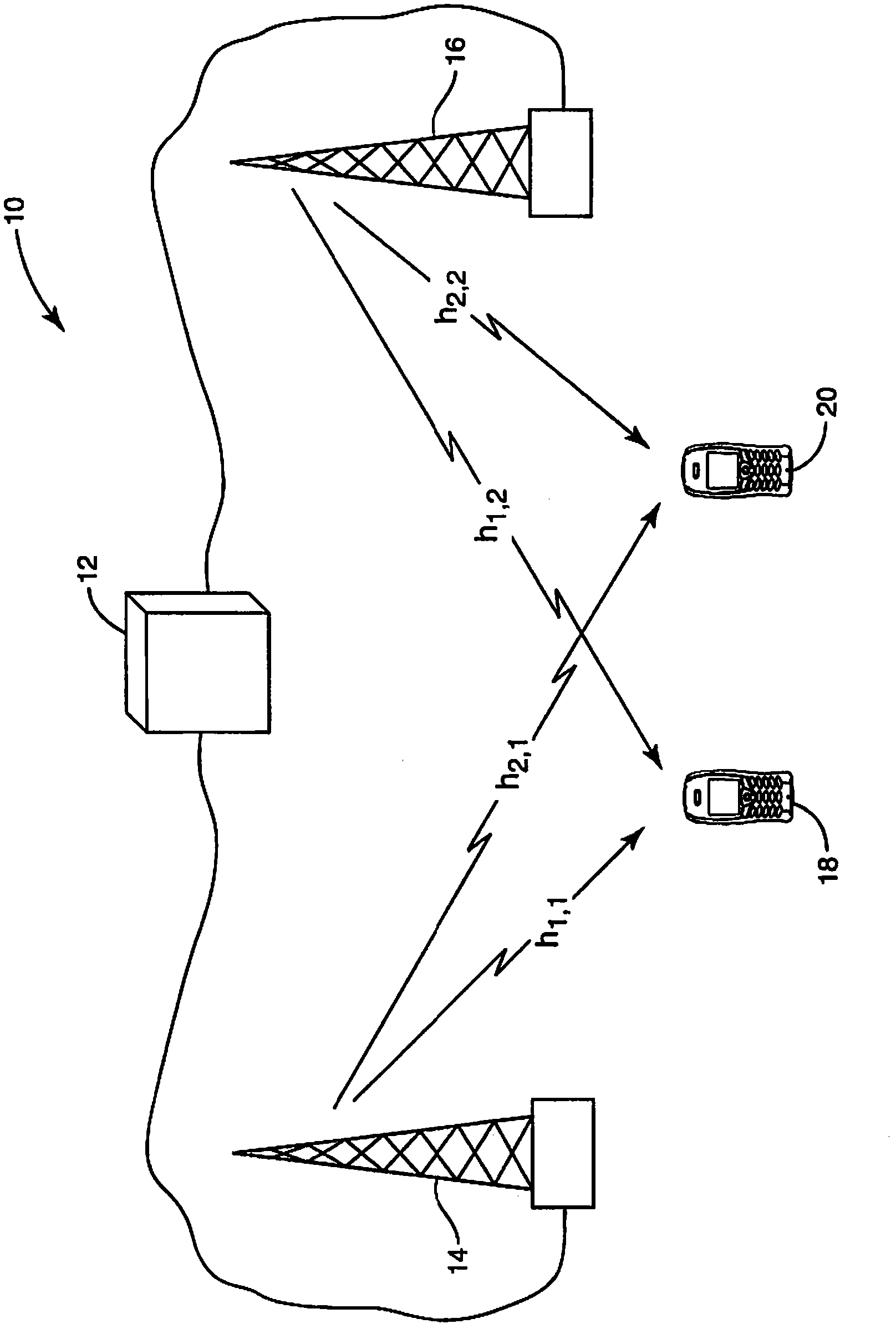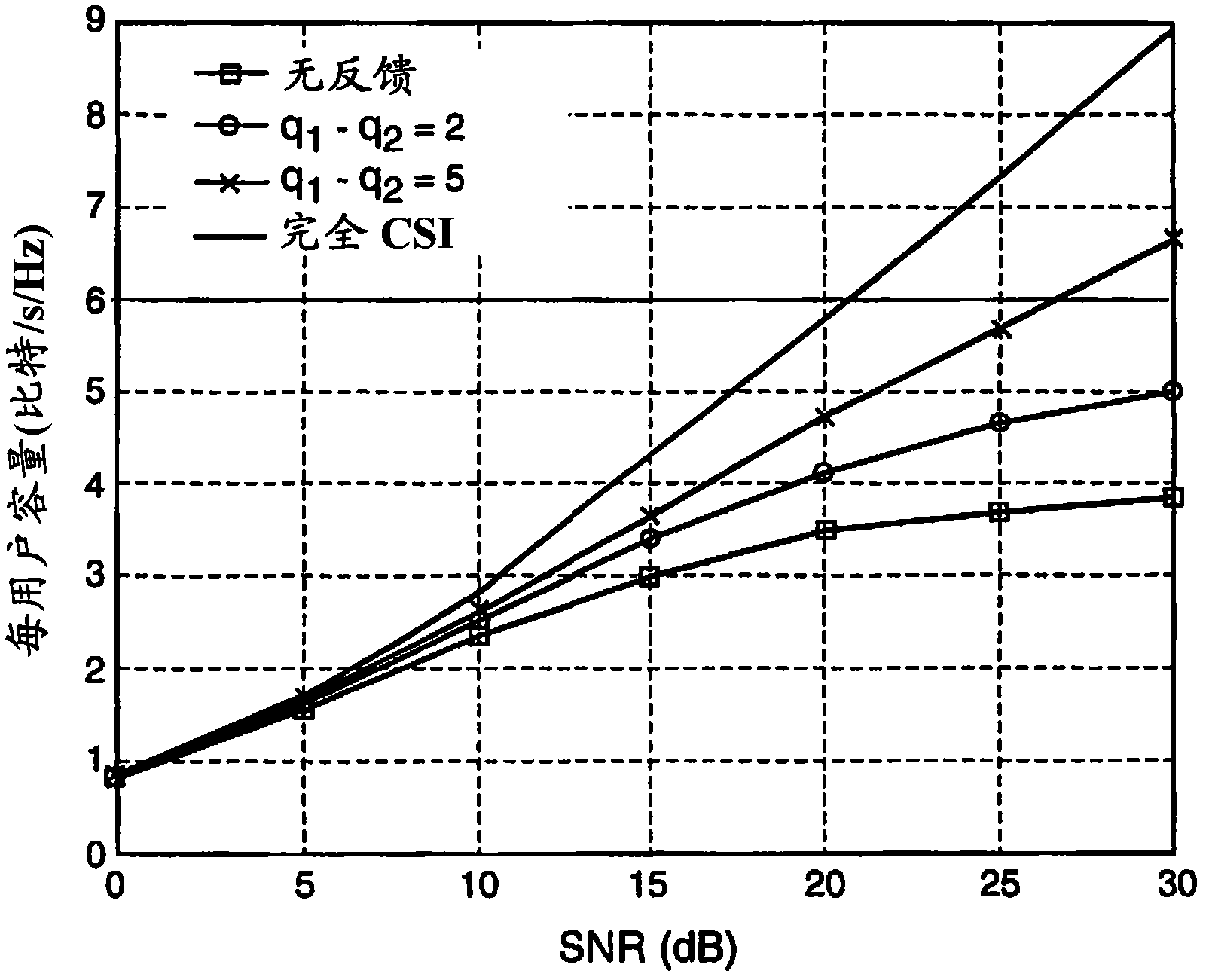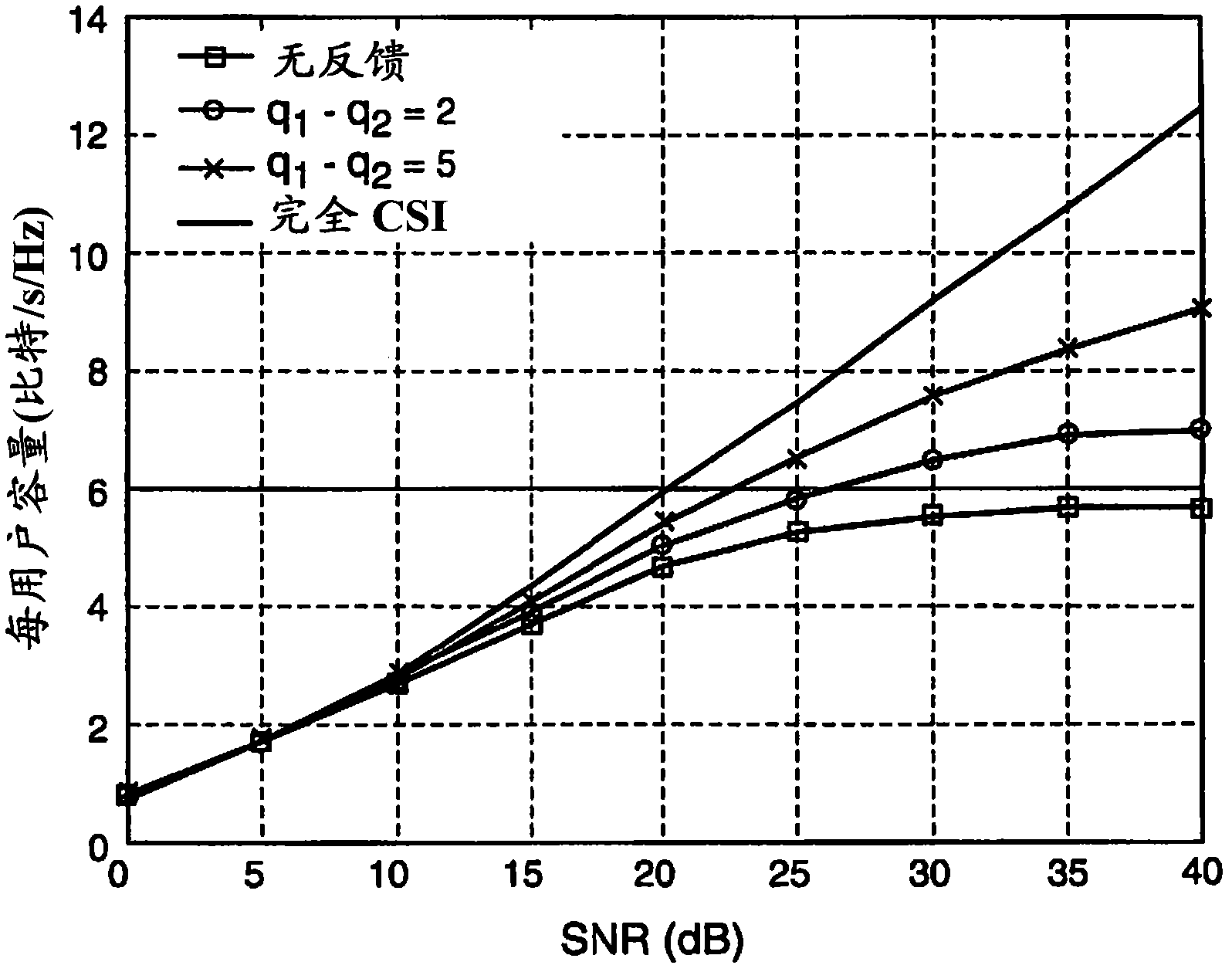Coordinated multipoint transmission/reception user grouping
A multi-user, multi-point technology, applied in access restriction, broadcast service distribution, network data management, etc., can solve problems such as low efficiency of RRM scheme and infeasibility of signal processing scheme
- Summary
- Abstract
- Description
- Claims
- Application Information
AI Technical Summary
Problems solved by technology
Method used
Image
Examples
Embodiment Construction
[0015] figure 1 A functional block diagram of an exemplary COMP wireless communication network 10 is shown. The controller 12 weights the signals transmitted by each of the at least two geographically dispersed transmit antennas 14 , 16 . Signals from each antenna 14, 16 are received by each of at least two user equipments (UEs) 18, 20 in an area or cell of operation. Since both transmit antennas 14, 16 and UEs 18, 20 are geographically dispersed, typically each UE 18, 20 will not receive a signal from each transmit antenna 14, 16 with the same signal strength. Conversely, due to path loss, the signals transmitted by the closer antennas 14, 16 will be received with high strength and the signals transmitted by the more distant antennas 14, 16 will be received with weak strength.
[0016] Cross-interference is defined for a UE 18, 20 as the squared ratio of the channel variance of the interfering (ie further) antenna to the channel variance of the desired (ie closer) antenna. ...
PUM
 Login to View More
Login to View More Abstract
Description
Claims
Application Information
 Login to View More
Login to View More - R&D
- Intellectual Property
- Life Sciences
- Materials
- Tech Scout
- Unparalleled Data Quality
- Higher Quality Content
- 60% Fewer Hallucinations
Browse by: Latest US Patents, China's latest patents, Technical Efficacy Thesaurus, Application Domain, Technology Topic, Popular Technical Reports.
© 2025 PatSnap. All rights reserved.Legal|Privacy policy|Modern Slavery Act Transparency Statement|Sitemap|About US| Contact US: help@patsnap.com



